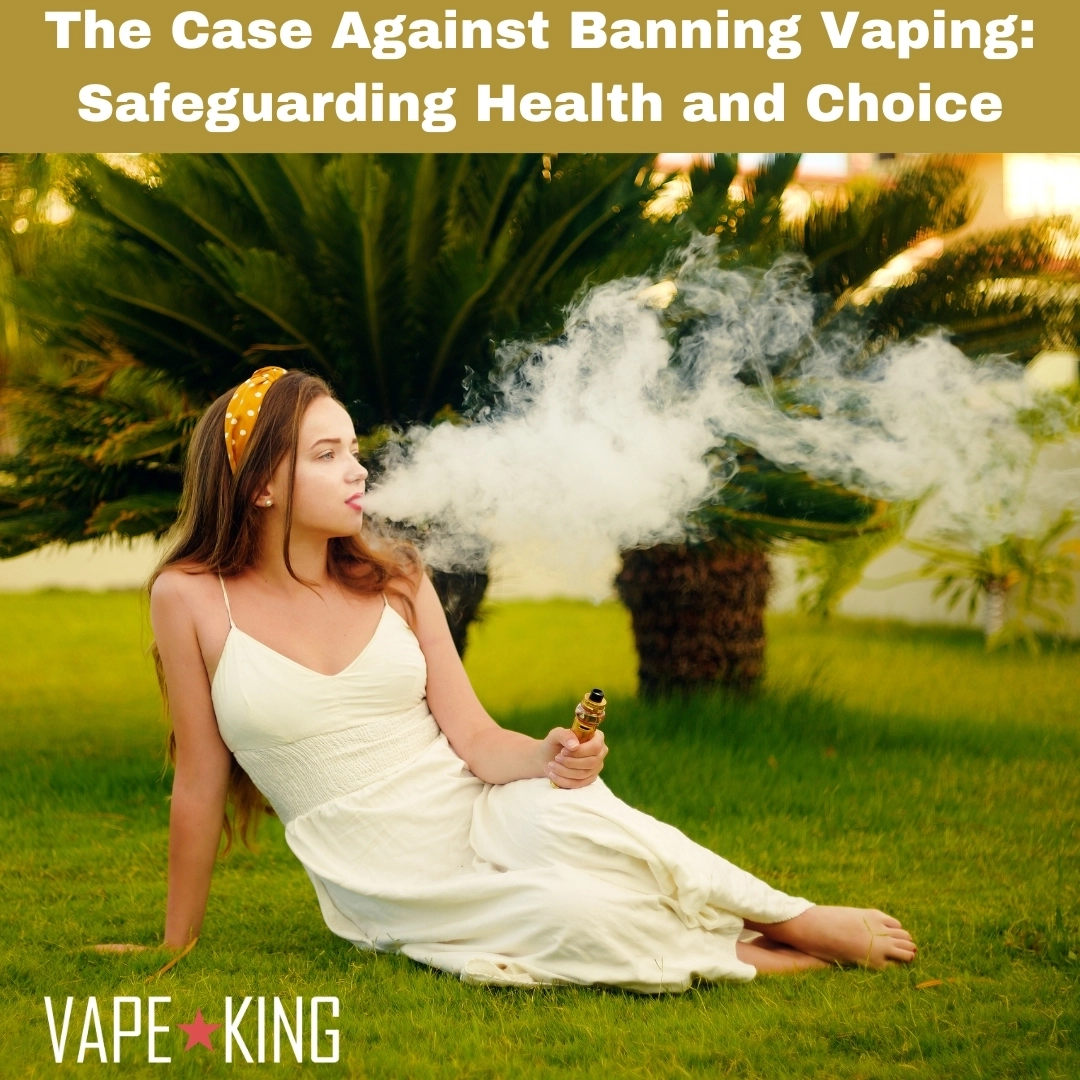The Case Against Banning Vaping: Safeguarding Health and Choice

Before delving into the discourse surrounding vaping and its potential prohibition, it's imperative to establish a comprehensive understanding of the practice. Without this clarity, it becomes challenging to take a definitive stance either in favor of or against the imposition of a vape ban.
Exploring Vaping:
What Constitutes Vaping?
Vaping involves the process of heating a substance to the point where it emits vapor. It's crucial to differentiate between heating and complete combustion, as smoking entails the latter, whereas vaping centers around controlled heating. E-liquids, comprising food-grade components like propylene glycol and vegetable glycerin, serve as the core ingredients in vaping. These liquids are heated within various vaping devices such as pens, pods, or mods, powered by batteries, which activate a coil to convert the e-juice into inhalable vapors. While many e-liquids contain nicotine for smokers seeking an alternative, there's also the option of nicotine-free formulations.
The Impact Over Time:
Since its emergence in 2003, vaping has undergone notable transformations, shaping various aspects of public health and societal perceptions.
- Smoking Cessation:
Vaping has emerged as a vital tool in aiding millions of smokers globally to relinquish their harmful tobacco habit. It has played a pivotal role in educating individuals about the adverse effects of smoking and provided a viable pathway towards cessation. - Life-Saving Intervention:
In instances where traditional Nicotine Replacement Therapies (NRTs) and conventional counseling methods failed, vaping has stepped in as a life-saving intervention. Many smokers, feeling helpless in their battle against addiction, found reprieve and liberation through vaping. - Youth Protection:
Vaping has not only contributed to curbing adult smoking but has also served as a deterrent for youth experimentation with traditional cigarettes. Its availability as a less harmful alternative has shielded numerous adolescents from falling prey to the perils of smoking.
Weighing the Pros and Cons:
When contemplating the prospect of a vape ban, several critical considerations come to the forefront.
- Risk of Relapse:
Banning vaping could potentially force former smokers back into the clutches of traditional tobacco consumption, undoing the progress made in harm reduction. The allure of legal cigarettes in many regions could lead individuals back to a habit proven to be significantly more detrimental to health. - Black Market Emergence:
Prohibition often drives the proliferation of illicit markets. In the absence of legal avenues, individuals may turn to unregulated sources for their vaping needs, exposing themselves to substandard and potentially hazardous products. - Youth Influence:
Banning vaping risks inadvertently steering youth towards conventional smoking. Many adolescents, cognizant of the health risks associated with smoking, have turned to vaping as a safer alternative. Restricting access to vaping may inadvertently push them towards the very habit vaping sought to deter.
Final Verdict:
Balancing Health and Liberties:
In conclusion, advocating for a blanket prohibition on e-cigarettes or vaping products presents substantial risks and drawbacks. Such a measure could undermine public health efforts, leading to unforeseen consequences. While concerns about nicotine intake persist, they must be weighed against the dire health implications of traditional smoking, which entails the inhalation of over 7000 chemicals, 70 of which are carcinogenic. As such, a nuanced approach that prioritizes harm reduction and informed decision-making is essential in navigating the complexities of vaping regulation.
No posts found
Write a reviewRecent posts
- WHO Issues Warning Regarding Falsely Labelled Propylene Glycol: A Caution for E-Liquid Manufacturers
- Salvaging a Wet Vape: Tips for Reviving Your Device After Water Exposure
- Discover the Top 10 Disposable Vapes in South Africa
- Unveiling Australia's Flawed Vaping Policies: A Catalyst for Illicit Markets

